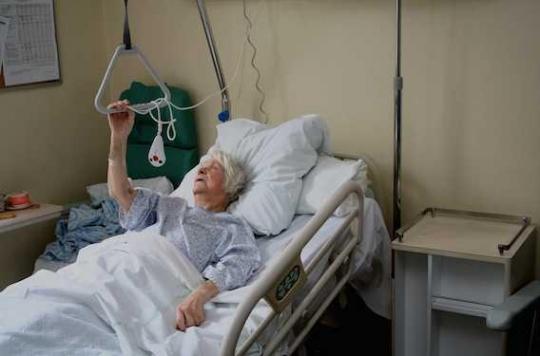Women who stop bisphosphonate treatment for osteoporosis are at greater risk of hip fracture and this risk increases with the length of the interruption.

Women who take “medication leave” (temporary or permanent discontinuation) of their bisphosphonate treatment for more than two years have an increased risk of hip fracture by almost 40% compared to those who continued this anti-osteoporotic treatment.
These are the results of a study carried out by the North American Institute of Health, the NIH, and which was presented today at the American Rheumatology Annual Meeting, ACR / ARHP 2017, in San Diego.
More and more frequent interruptions
Osteoporosis is a common condition that results from the loss of bone mass, measured by bone densitometry, especially in women after age 50. Without treatment, 40% of them will have at least one major bone fracture (wrist, arm, vertebra, femur and ribs).
Treatment with bisphosphonates, a class of anti-osteoporotic drugs, which are antiresorptive drugs, can slow bone loss and decrease the risk of fractures in people with osteoporosis.
But, after years of continuous treatment, taking a “drug vacation” with bisphosphonates is becoming more and more common. This has even come together with the bad reputation on the long term risks of bisphosphonates in various media and social networks.
A study in “real life”
In a general population-based cohort study, researchers at the University of Alabama, Birmingham investigated the potential impact of stopping bisphosphonates on the risk of hip fracture in long-term users. term of these treatments.
The researchers used 2006-2014 national data from Medicare (the US health insurance fund for the elderly) to identify 156,236 women long-term users of bisphosphonates (at least 80% adherent for three years or more). The mean age of the women was 78.5 years and the most commonly used bisphosphonates in the study were alendronate and zoledronic acid.
40% of medicated vacations
During a 2.1 year follow-up period, more than 40% of women stopped bisphosphonate treatment for at least six months or longer. Of these women, 12.7% subsequently restarted a bisphosphonate. Of all the women in the study, 10.8% died during the follow-up period for various reasons.
A total of 3,745 hip fractures occurred during follow-up. Hip fracture rates are lowest in women who continue to take bisphosphonates and gradually increase as the length of the medication vacation increases. Women who stopped taking bisphosphonate for more than two years have the highest rate of hip fractures and have a 39% increased risk of hip fractures compared to women who continued with bisphosphonate.
Holidays that you have to know how to adjust
“Our objective was to assess the risk associated with medication vacations by taking into account the duration of the discontinuation of treatment and by controlling for any confounding factors, such as race, median income, rural or urban habitat, Densitometric scores or associated disease, said Jeffrey Curtis of the University of Alabama, Birmingham, and lead author of the study.
“While the notion of medication vacations has become commonplace in the management of osteoporosis, there is a paucity of evidence on when we should consider restarting bisphosphonate therapy,” said Dr Curtis. The analysis according to the duration of the interruption of the anti-osteoporosis treatment shows a modest risk of up to one year of discontinuation before a net increase in risk to reach 39% at 3 years.
“The results of the study may provide useful information to guide physicians in planning long-term anti-osteoporosis treatment.”
.
















